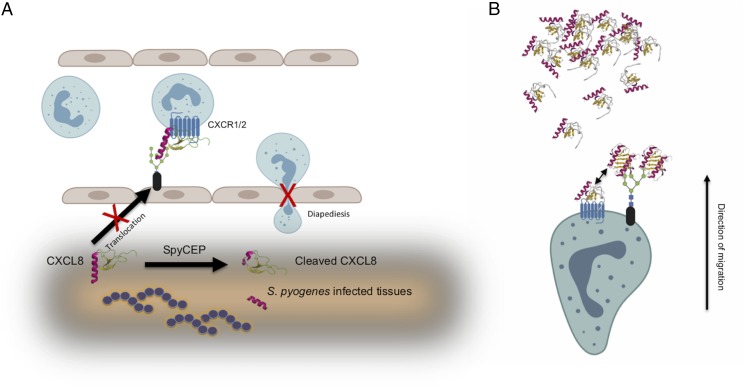FIGURE 7.
Loss of GAG binding following SpyCEP cleavage impairs CXCL8 translocation, presentation, and neutrophil chemotaxis. (A) shows how SpyCEP is envisaged to impair the initial recruitment of neutrophils by CXCL8. Loss of GAG binding following cleavage by SpyCEP results in chemokine that is unable to be translocated to the endothelial surface and subsequently be presented as a haptotactic gradient to direct neutrophil diapedesis. (B) shows the requirement for GAGs in neutrophil migration along a gradient of CXCL8 (direction indicated by the arrow). Cell surface GAGs encounter chemokine and bind it, increasing the local concentration of chemokine surrounding the neutrophil by assisting in chemokine oligomerization. Chemokine monomer can dissociate from the oligomer and activate the chemokine receptor (double-headed arrow).

